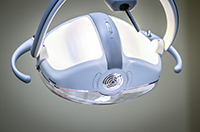 No discipline breaks down faster on a job site than traffic control and storage space. The turf wars and project inertia follow. Democracy is a poor way to run traffic control. This regulation requires a czar, one person responsible for and with the authority to sheriff this aspect of sites.
No discipline breaks down faster on a job site than traffic control and storage space. The turf wars and project inertia follow. Democracy is a poor way to run traffic control. This regulation requires a czar, one person responsible for and with the authority to sheriff this aspect of sites.
Traffic management concerns efficiency and safety. Done well, the job is enhanced; done poorly, the job crashes to a halt.
Begin by surveying the surrounding roads which service the site. Are any noteworthy conditions present:
- Steep grades leading into the site: can they be avoided with an alternate route?
- Schools, factories, shopping malls, or any high traffic area or regular high pulse traffic events need to be time mapped and routes or delivery schedules altered, especially large, heavy or wide loads.
- Where are the frequently used pedestrian areas?
- Tolls or gates present?
- What is the speed limit on the site exit roadway? Do you need traffic control?
- Where do you have entrance options?
- Are there any overly sensitive stakeholder neighbors like environmental protection or historical areas?
- Is any street work scheduled not associated with your site?
These questions will guide a logical approach, entrance, exit and departure strategy.
Review the site plan. Will heavy or long trucks have the same access to storage as the smaller and lighter trucks? Are there critical pinch points that need to remain clear? Some general rules for devising a plan:
- Avoid exiting a site within one hundred feet of a traffic light. That’s a traffic jam begging to happen.
- Minimize backing up on site.
- Minimize truck traffic through worker foot paths.
- Site speed limit should be 5 mph max.
- Avoid storage and travel in sensitive or tree protection areas.
- Decide on site access for weather events – include forklift use on wet or icy ground conditions.
- Determine the rules for forklift use, what areas, flagmen, what storage access.
- Will truck tire washing be necessary? If so, is the water and traffic slow down manageable?
Most of site traffic management is logical as long as you mentally walk through the site construction plan. Start off site and work towards your storage areas and most difficult improvement access stations. Managing this issue in advance of the job start is essential. Supporting your traffic czar, critical.











